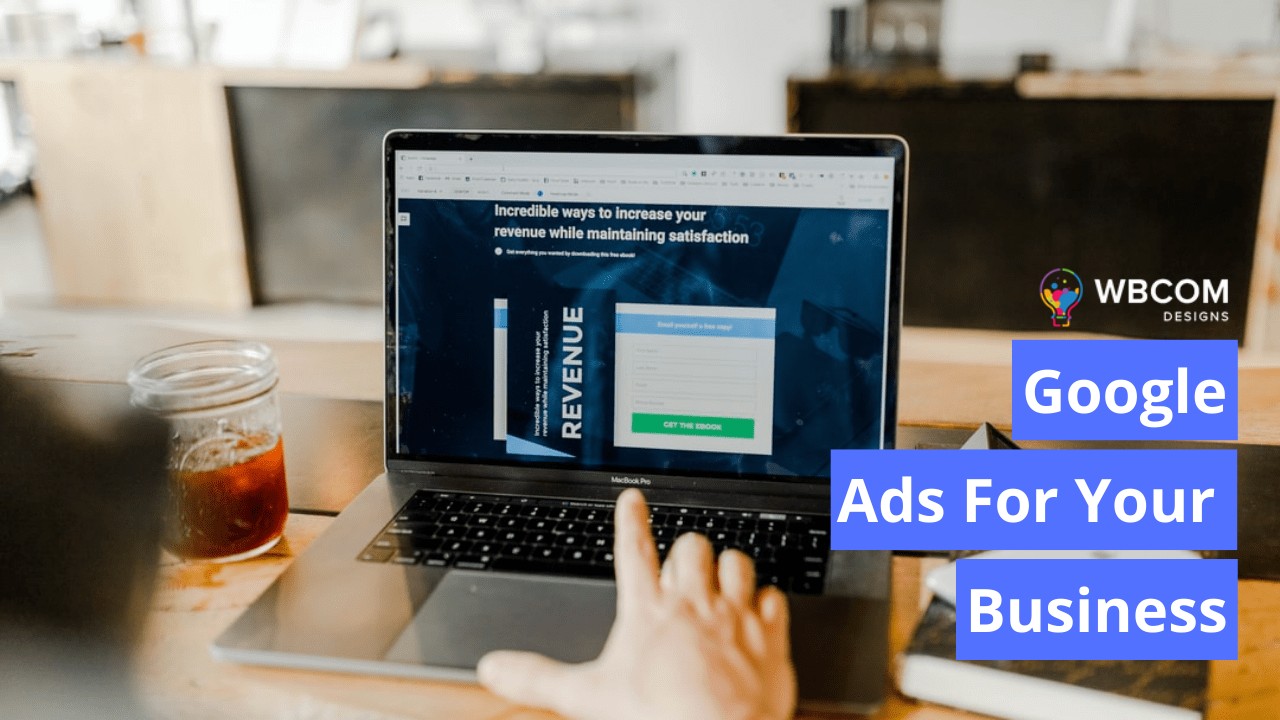Google Ads is a must-have for any pay-per-click (PPC) or outbound marketing campaign. If appropriately implemented, it has the potential to do wonders for a company’s bottom line by significantly increasing website traffic, generating leads, and closing sales. To help you make the most of one of the most powerful online advertising platforms, here is a comprehensive guide to Google Ads for your business.
Table of Contents
ToggleWhat exactly are Google Ads?
1. Search Ads

Ads that appear in search engine results are a type of native advertising. Ads tailored to the user’s search query will appear as sponsored results at the top of search engine results pages. These search advertisements mimic the organic search results’ design underneath them.
2. Google Display Network
Sites like Youtube, Weather.com, and the websites of local news stations are all part of the Google Display Network. In contrast to paid search, GDN display ads (banners, sidebars, etc.) are placed on GDN sites. They don’t appear as text results but as custom-made, clickable graphics.
Ads on the Google Display Network can be tailored to specific users based on demographic information, their search and browsing histories, and retargeting lists. The adverts in this format can help you target people who haven’t yet performed keyword searches relevant to your business.
How to Use Google Ads: A Brief Guide:
- Campaign Settings
- Set up, ad groups.
- Create ads
- Billing
1. Campaign Setting
In this initial phase, you’ll gather the resources needed to lay the groundwork for your entire effort. In this initial part, you should sketch out:
- Aims and Purposes
- Ad Format
- General Settings
- Name of the Campaign
- Networks
- Time
- Targeting and audience segments
- Finances and Billing
- Ad Extensions
What follows is a more in-depth explanation of what each part implies.
1. Purpose and Aims
Here you will learn about the options for both directions and final destinations. Select the one that works best for your business and its products or services to achieve your goals.
2. Different Google Ads

The following required section lists numerous available advertising formats. Keep reading for a comprehensive comparison of the most well-liked and frequently employed options, and learn why it’s crucial to have that knowledge.
Also Read: How To Auto-Suggests Locations From Google Maps During Search And Job Submission
3. Search
This is the companies’ most frequent and widely used version of Google Ads. When people hear “Google Advertising,” search ads are usually the first thing that comes to mind.
As the name implies, this type of marketing appears in search engine results. These advertisements are often displayed at the page’s beginning and finish.
Paid results can be distinguished from organic ones by the presence of an “Ad” label in the upper left corner of the page.
Also Read: 7 Best Service Marketplace WordPress Themes
4. Display
Since then, Google has expanded the kind of ads that companies may use to promote themselves throughout Google’s many services. Unlike Search advertisements, Display ads take the form of banners and can be seen on any sites that are part of the Google Network.
Also Read: 7 Tips for Optimizing Your Content with Images for Higher Conversions
5. Shopping
Google’s shopping tab is where you’ll see these product-focused advertisements. Like Search advertisements, these will appear at the top of users’ search results when they search for the advertised product.
6. Video- Google Ads For Your Business
Video ads like these typically appear on the video-sharing website YouTube. This advertising method is time-consuming and labor-intensive due to the video hosting platform. Unlike traditional banner advertising, which can run with just text or product display, these ads require a unique video to market the advertised service or sound effect.
Additional Ad options are detailed below.
- Discovery
- Smart
- Local
- App
- General Settings
Let’s move on to the other fundamental aspects of your campaign’s construction. Time and audience selections for your campaign are both under your control.
One aspect is settling on a geographic scope for your ad’s reach. Local or worldwide, you can target a specific demographic or niche audience depending on their location, gender, age range, and other characteristics.
Keep in mind that the more specific you make your target segments, the higher the cost of your ad campaign will be.
Consider whether it makes more sense for your firm and its products or services to aim for a broader audience or whether it would be more expensive, and hence less effective, to expand your focus on specific niches and interests. Lastly, you’ll want to limit your campaign’s spending.
You have the option of establishing both a monthly and daily spending limit. Google Ads pricing is lovely because it’s adaptable to your needs and provides you with an estimate of your money’s return on investment (ROI).
In addition, you can play around with different monthly maximum budget amounts based on how well your ads perform and check out extras like extensions.
Also Read: Complete Beginner’s Guide To Advertising On Amazon
1. Set Ad Groups- Google Ads For Your Business
You may choose which keywords will be used in the campaign here. Multiple ad groups are possible, each containing a unique set of keywords related to a specific topic.
Always keep your target audience in mind while deciding on a set of keywords. Consider how they look for products like yours and how you might tie them into their preferences.
Additionally, you need to be specific and pertinent when selecting your keywords.
You can prevent your ad from being associated with unrelated queries using “negative keywords.” Prepend the minus character (“-“) to the keyword when adding it to an ad group as a negative keyword.
Also Read: Drive Traffic To Your Ecommerce Store With Google Ads
2. Create an ad
Having finished the bulk of the campaign’s design, you can move on to configuring the ad that users will see. The following image is a preview tab from Google Ads, which shows how the final ad will look on a desktop computer and a mobile device.
Once Google Ads approves your ad, it will be viewable by the general public, so you’ll want to ensure it’s precisely how you want it.
3. Billing- Google Ads For Your Business

The billing procedure is the penultimate and final stage. The fourth step, which is adding the required information for billing, is very self-explanatory.
Also Read: Create Social Membership Website With Paid Membership Pro
Conclusion of Google Ads For Your Business
Keep in mind that developing and tracking practical marketing efforts takes time. If you want your initial ad to produce the best possible results, you’ll need to make some adjustments to it over time.
You’ll need extra measures to increase your exposure, boost your conversion rate, and keep your cost per click (CPC) low.
Split testing and a/b testing are the two primary methods for assessing the efficacy of an ad. In addition, testing out multiple ad campaigns for various products and services within your organization to determine what works best and being abreast of the latest developments in keyword research will help you get the most outstanding results.
Intersting Reads:
The Best Google My Business Tools You Need To Try
Searching On Google: Tips To Make Your Google Experience More Productive







